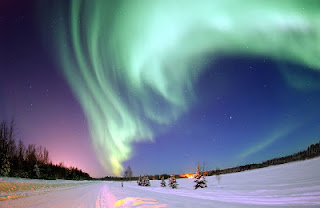 Solar storm that occurred yesterday in several regions of the earth was the highest in six years. The speed of the storm up to 2,000 kilometers per second. The biggest previous solar storm that occurred in 2005, the solar protons moving at 93 million miles per hour.
Solar storm that occurred yesterday in several regions of the earth was the highest in six years. The speed of the storm up to 2,000 kilometers per second. The biggest previous solar storm that occurred in 2005, the solar protons moving at 93 million miles per hour.Reports the Daily Mail, Wednesday (25 / 1) states, the effects of solar storms, which is a reflection of natural light (northern lights or aurora borealis) can still be seen until Wednesday (25 / 1) of this, including in Canada, Norway, and the UK. In fact, the British Astronomical Association Director Ken Kennedy mentions the effect of solar storm last Tuesday it still can be seen up to this weekend.
Aurora is a phenomenon of light emission in a burning layer of a planet's ionosphere as a result of the interaction between the planet's magnetic field is owned by the charged particles emitted by the Sun (solar wind).
On Earth, auroras occur in the area around the North pole and south magnetic poles. Aurora that occurs in the northern region known as the Aurora Borealis (IPA / ɔɹɔɹə bɔɹiælɪs /), named Rom bersempena Goddess of Dawn, Aurora, and the Greek name for north wind, Boreas. This is because in Europe, the aurora often looks reddish in the northern horizon as if the sun will rise from that direction. The aurora borealis is always going on between September and October and March and April. The phenomenon of the aurora in the south, known as Aurora Australis has properties that serupa.Tapi sometimes auroras appear at the top of the mountain in a tropical climate.